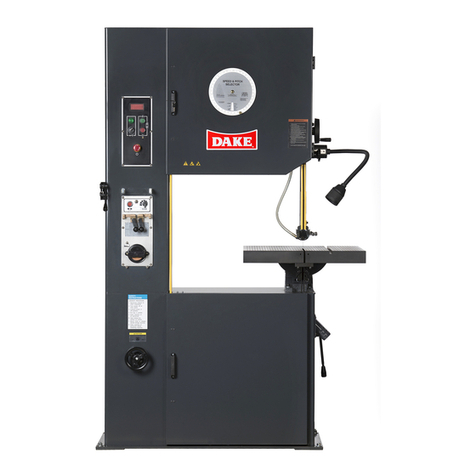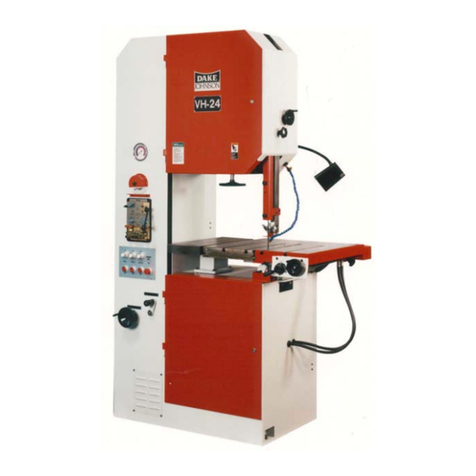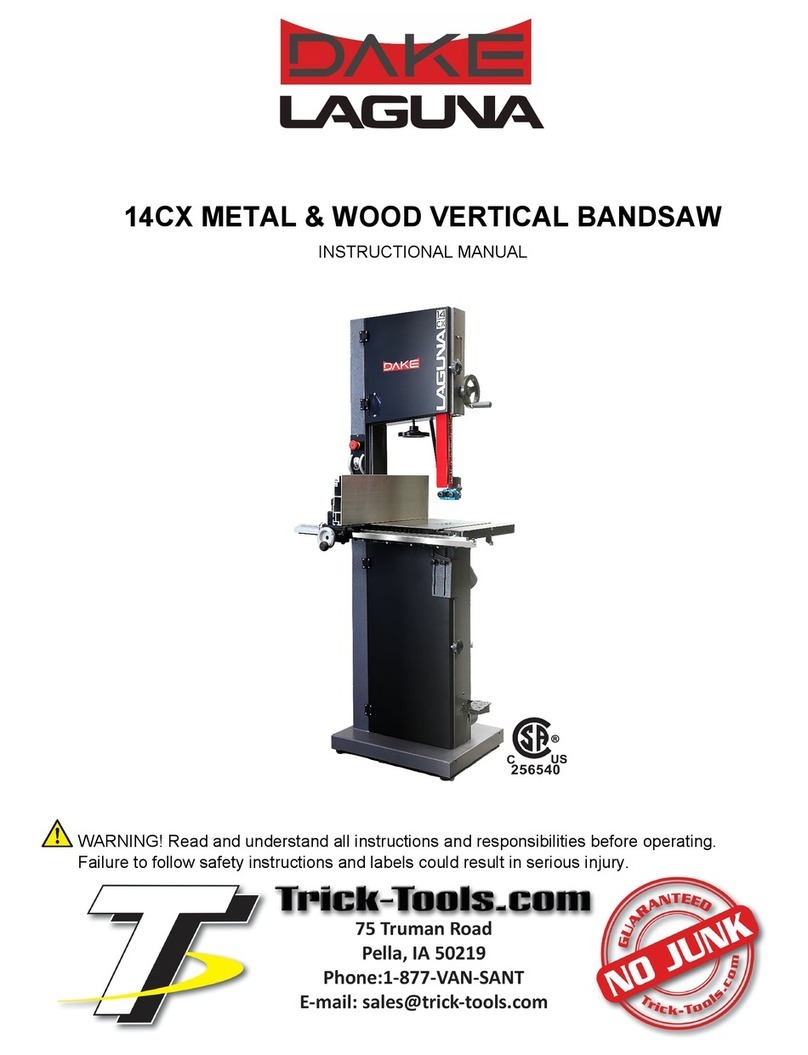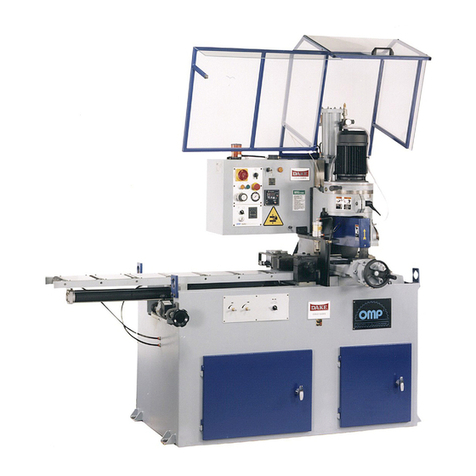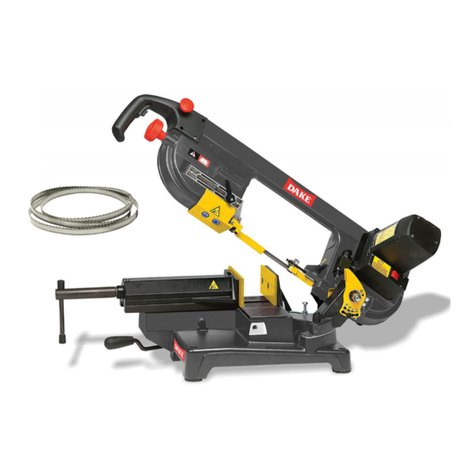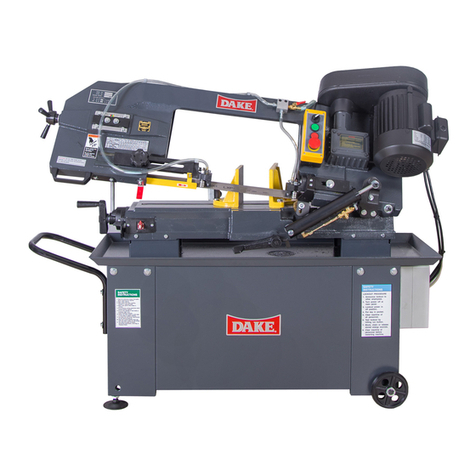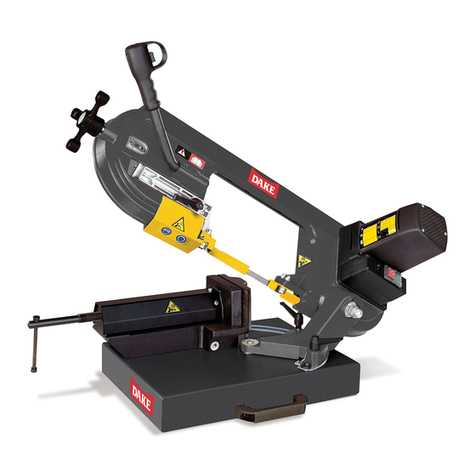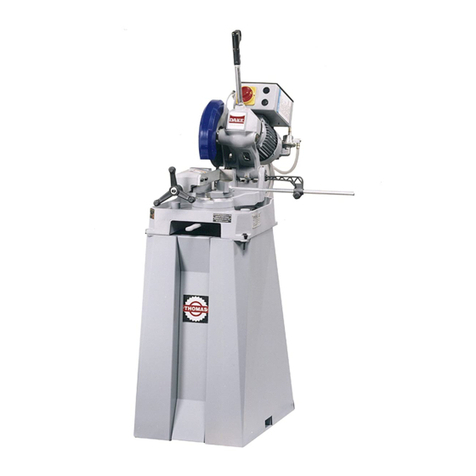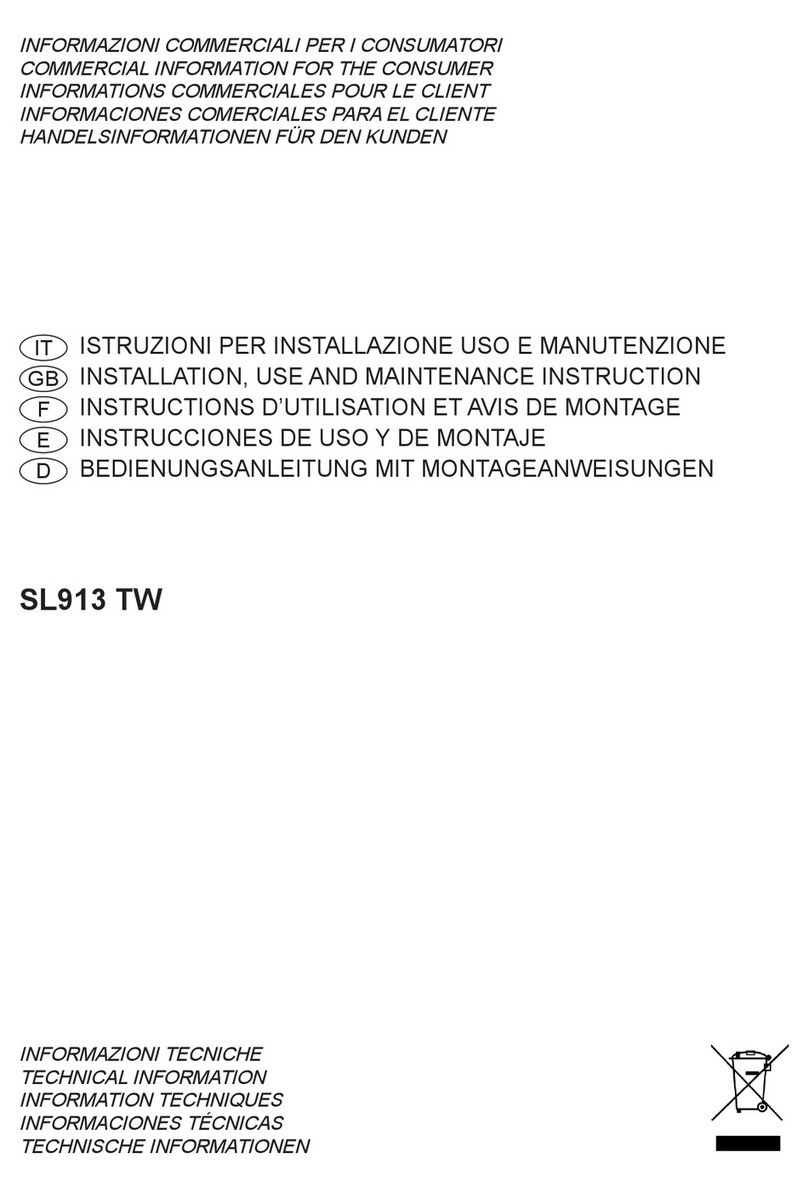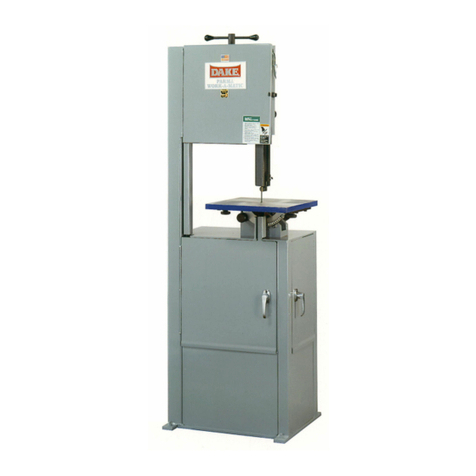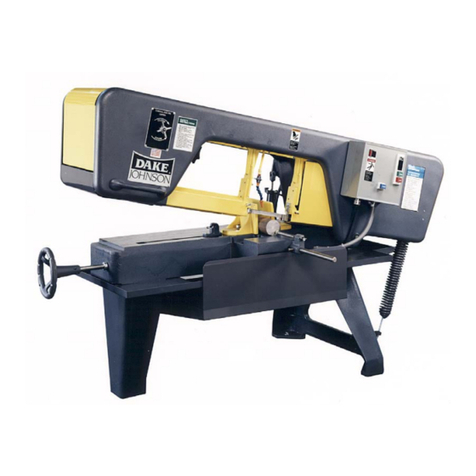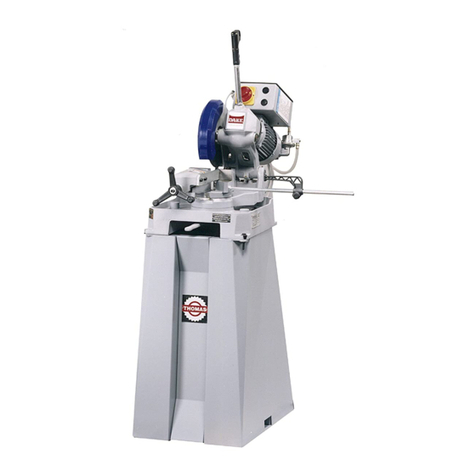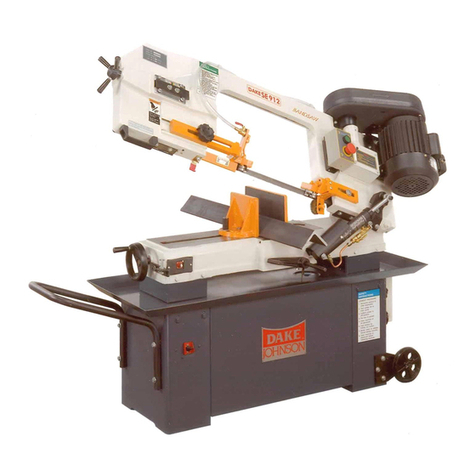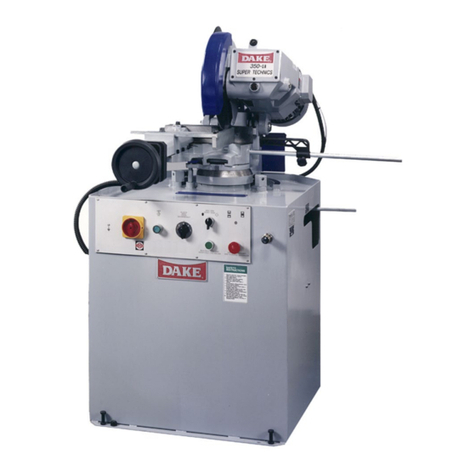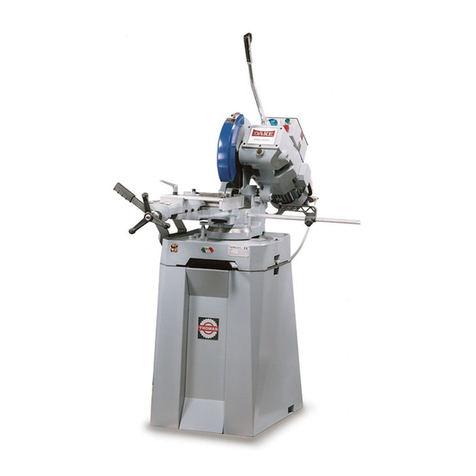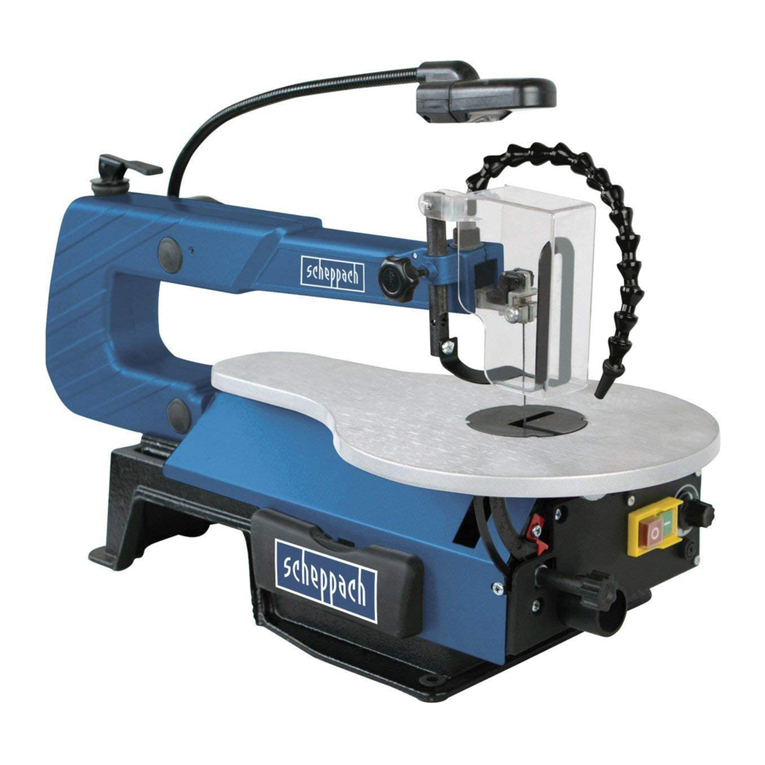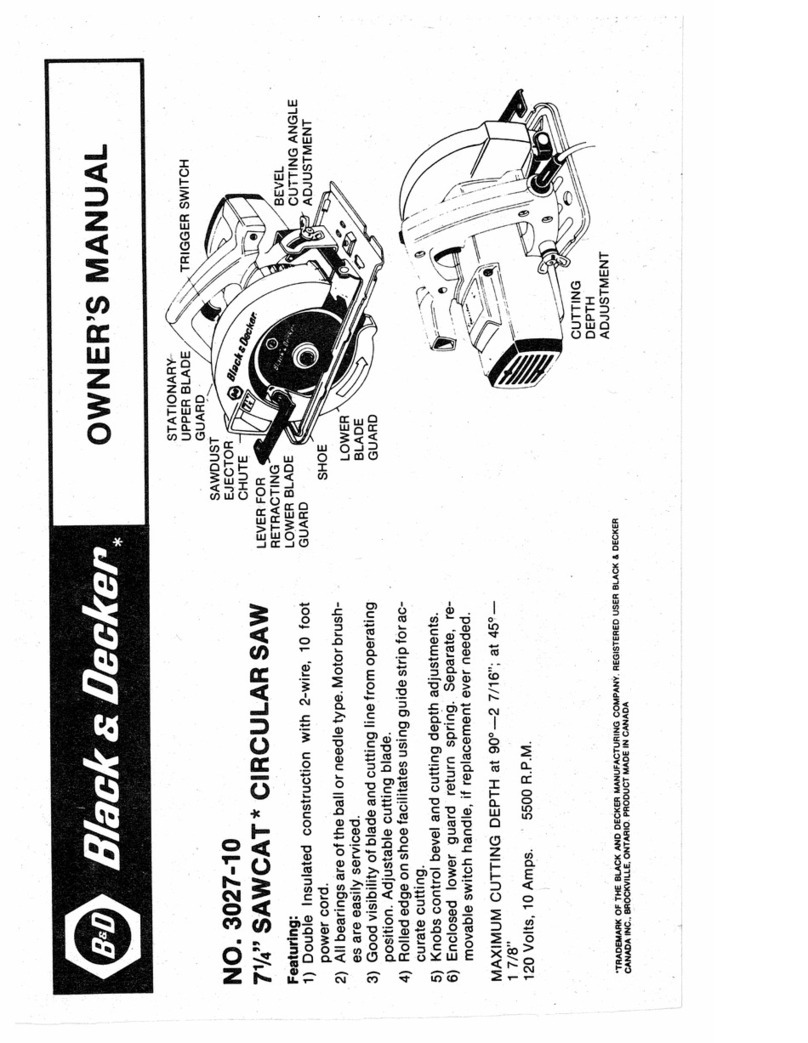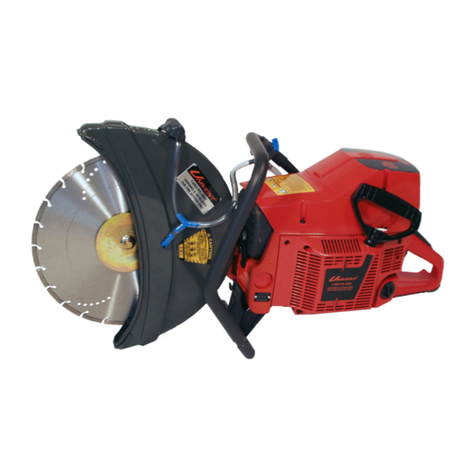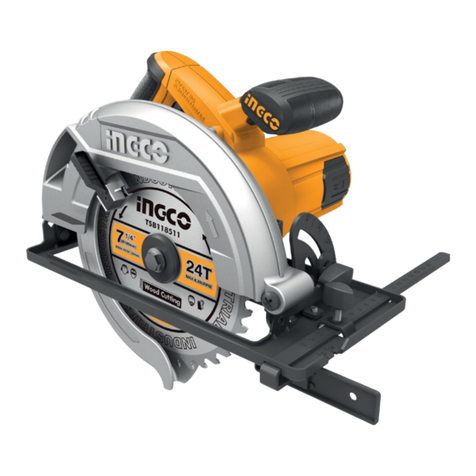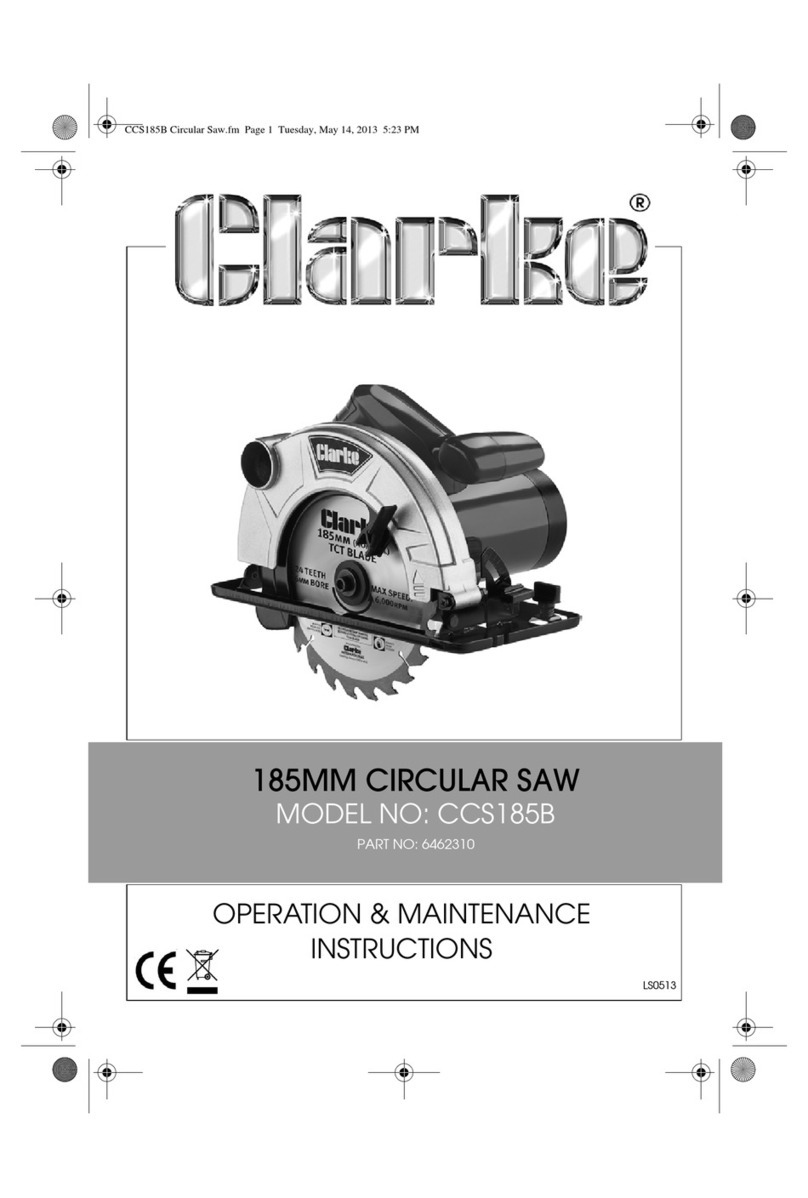
- 5 -
wet locations, or expose them to rain. Keep work area well-lighted.
(3). KEEP CHILEREN AND VISITIORS AWAY. All children and visitors should be kept a
safe distance from work area.
(4). DON’T install & use this machine in explosive, dangerous environment.
E. MAINTENANCE:
(1). DISCONNECT machine from power source when making repairs.
(2). CHECK DAMAGED PARTS. Before further use of the tool , a guard or other part
that is damaged should be carefully checked to ensure that it will operate properly and
perform its intended function check for alignment of moving parts, binding of moving
parts, breakage of parts, mounting, and any other conditions that may affect its operation.
A guard or other part that is damaged should be properly repaired or replaced.
(3). DISCONNECT TOOLS before servicing and when changing accessories such as
blades, bits, cutters, etc.
(4). MAKE SURE that blade tension and blade tacking are properly adjusted.
(5). RE-CHECK blade tension after initial cut with a new blade.
(6). TO RPOLONG BLADE LIFE ALWAYS release blade tension at the end of each
work day.
(7).CHECK COOLANT DAILY Low coolant level can cause foaming and high blade
temperatures. Dirty or week coolant can clog pump, cause crooked. Cast, low cutting rate
and permanent blade failure. Dirty coolant can cause the growth of bacteria with ensuing
skin irritation.
(8). WHEN CUTTING MAGNESIUM NEVER use soluble oils or emulsions(oil-water mix)
as water will greatly intensify any accidental magnesium chip fire. See your industrial
coolant supplier for specific coolant recommendations when cutting magnesium.
(9). TO PRNMT corrosion of machined surfaces when a soluble on is used as coolant,
pay particular attention to wiping dry the surfaces where fluid accumulates and does not
evaporate quickly, such as between the machine bed and vise.
F. SPECTIFIED USAGE:
This machine is used only for general metals cutting within the range of cutting capacity.
G. NOISE:
A weighted sound pressure level : 80 dB.
H. SAFETY DEVICE:
By the time the saw arm cover is opened, the interlock switch will function to stop the
machine. Do not remove this switch from machine for any reason, and check it's function
